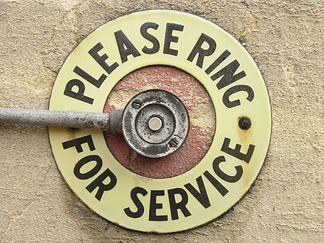 Visitors who don't click don't convert: as marketers, we know this to be true. Your visitors can't get through your sites checkout process or signup form without clicking at least one button. That one button-- like all of your buttons-- can be improved on. Generally, when a call to action fails, the reason is simple. We need to stop ignoring the so-called "small things," especially when conversion rates depend on them.
Visitors who don't click don't convert: as marketers, we know this to be true. Your visitors can't get through your sites checkout process or signup form without clicking at least one button. That one button-- like all of your buttons-- can be improved on. Generally, when a call to action fails, the reason is simple. We need to stop ignoring the so-called "small things," especially when conversion rates depend on them.
Common Excuses for Poor Call To Action Buttons
See if you can relate to any of these excuses for failing to optimize calls to action:
-
It’s hard to get creative when you’ve only got room for two or three words on a button
-
Everything seems best summarized as “Learn More,” “Sign Up,” or “Buy Now”
-
If people really want my stuff, the button isn’t going to make or break a conversion
-
Buttons are small — we’ve got bigger fish to fry than that!
Those excuses are like a ceiling blocking your conversion rate from lifting. Your call to action isn’t supposed to summarize … it’s supposed to get people to act.
You shouldn’t limit your button copy to a three-word maximum. A button that fits the standards of every one-percent-converting site should not be the button you expose to your hard-won visitors.
You’re not writing copy for visitors who would walk over hot coals to get your stuff. You are most often writing for people who are on the fence and who can be pulled over to your patch of grass with great messages.
So let’s cut the excuses and start using techniques we know will work, like the six data-backed methods for improving conversions explained below.
Colors Matter
This may seem obvious: different colors have different meanings. For instance, red can sometimes create a sense of urgency. The main goal with your CTAs is to make sure they stand out. You can accomplish it by creating a strong contrast between the color of your button and your website design.
Location!
Just like with any business, location is one of the most important factors. You should test adding CTAs above the fold, below the fold and anywhere else you think makes sense. Don’t assume that placing your call to action higher on the page will boost your conversion rate. Make sure your visitors know what they are getting before you present them with a call to action.
Avoid Generic Button Copy
So, what button copy should you use? Click here, buy now, add to cart, purchase now, and order now are a few call-to-action texts that you see around. Generic phrasing, like the words above, don’t really impact conversion rates by much. If they do, then there are other elements on your webpage that need to be tested. Calls to action that are related to your product or service tend to convert better than generic calls to action. Try testing button text that is highly related to what you are offering or selling.
Timing is Essential
By forcing people to understand what you are selling and the benefits of it, you can increase your conversion rate. A great way to do this is to not show users your call-to-action button until you get them to read what you are offering. This helps pre-qualify potential customers and get them excited on what you have to offer.

